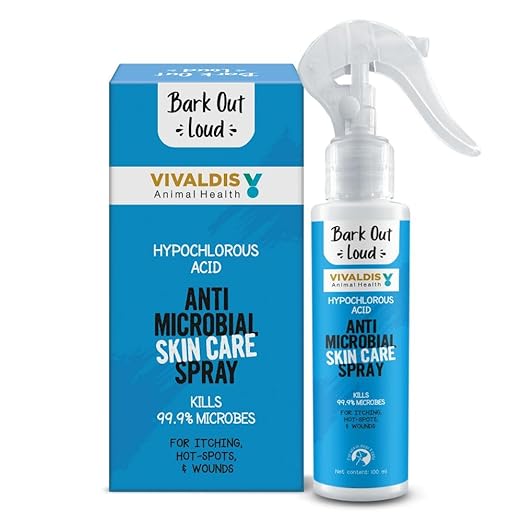Dogs bring endless joy and companionship to our lives. Yet, behind their wagging tails, there can sometimes be discomfort caused by uninvited guests—bugs and insects. From the tiniest flea to the relentless tick, insects on dogs are a common concern for pet owners. Knowing how to identify, prevent, and treat these pests is crucial to ensuring your furry friend stays healthy and happy.
Why Understanding Insects on Dogs Matters for Pet Owners
Insects on dogs are more than a minor nuisance; they can pose significant health risks. Left unchecked, these pests can lead to skin issues, allergic reactions, and even the transmission of life-threatening diseases. By understanding the impact of insects, pet owners can take proactive measures to safeguard their dog’s health.
The Impact of Insects on Your Dog’s Health and Well-being
Bugs on dogs affect more than their skin. Constant itching and discomfort can lead to stress, anxiety, and even behavioral changes. Physically, insects like ticks or fleas can cause anemia, infections, and allergic dermatitis. Beyond these immediate effects, certain bugs can transmit diseases such as Lyme disease or ehrlichiosis, further emphasizing the importance of prevention and treatment.
What Insects Bite Dogs?
A Quick Overview of Common Insects on Dogs
Dogs are prone to encounters with
- fleas,
- ticks,
- mites,
- lice, and various flies.
Each of these pests has unique habits and effects on your dog, ranging from mild irritation to serious health concerns.
Fleas and mites are notorious for causing skin issues, while ticks and lice are more stealthy threats. Each type of bug requires a specific approach for identification and elimination.
Ticks on Dogs: Tiny Arachnids with Big Consequences
Ticks latch onto your dog’s skin to feed on their blood. While they may appear harmless at first glance, ticks can transmit diseases like Lyme disease and Rocky Mountain spotted fever. Regular tick checks, especially after outdoor adventures, are essential for prevention.
Fleas vs. Other Insects on Dogs: Key Differences Every Pet Owner Should Know
Fleas are jumpy pests that spread rapidly and cause relentless itching. Unlike ticks, fleas thrive in your dog’s environment, such as bedding or carpets, making infestations harder to control. Recognizing these differences can help pet owners take targeted actions.
Lice, Ants, and Flies
While fleas and ticks get most of the attention, ants and flies can also bite or irritate your dog. These pests are often seasonal or situational but can still cause significant discomfort.
How to Identify Insects on Dogs
Visual Clues: Spotting Bugs in Your Dog’s Fur
Look closely for moving specks, egg clusters, or inflamed patches of skin. Part the fur in well-lit areas, focusing on regions like the ears, underbelly, and paws where bugs commonly hide.
Behavioral Changes: Dog Itching Due to Bugs and Other Signs
Excessive scratching, biting, or licking are telltale signs of insect activity. Watch for signs of restlessness, whining, or sudden changes in behavior that indicate your dog is uncomfortable.
How to Check for Bugs on Dogs: A Step-by-Step Guide
- Start with a visual inspection in bright light.
- Use a flea comb to detect fleas or eggs.
- Inspect the ears, tail, and armpits for hidden ticks or mites.
- Keep an eye out for abnormal skin patches or swelling.
Symptoms of Insect Bites on Dogs
Common Reactions: Swelling, Redness, and Pain
Most insect bites cause immediate redness, mild swelling, and localized pain. Your dog may react by scratching or licking the affected area persistently.
Allergic Reactions: When an Insect Bite Becomes Dangerous
Severe reactions can include hives, difficulty breathing, or swelling beyond the bite site. If you notice these signs, seek veterinary attention immediately.
Infections and Secondary Issues from Bug Bites
Scratching often breaks the skin, leading to secondary bacterial infections. Symptoms like pus, heat, or an unpleasant odor indicate an infection requiring treatment.
Are Insect Bites Dangerous for Dogs?
Potential Risks of Untreated Insect Bites
Untreated bites can escalate into serious conditions, such as abscesses, chronic dermatitis, or systemic infections.
Understanding Insect-borne Diseases in Dogs
Some insects, like ticks and mosquitoes, transmit diseases such as heartworm, Lyme disease, and ehrlichiosis. Preventative care is key to avoiding these threats.
When to Visit the Vet for Bug-Related Issues
Seek immediate veterinary care if you notice extreme swelling, lethargy, or signs of infection. Regular checkups help identify and address issues early.
Insect Infestations in Dogs
Signs Your Dog Has a Severe Bug Problem
Clusters of bites, hair loss, and visible bugs indicate an infestation. Behavioral signs like excessive scratching or a dull coat are also red flags.
How Insect Infestations Affect Your Dog’s Health
Chronic infestations can lead to anemia, weakened immunity, and long-term skin damage.
The Long-term Consequences of Ignoring Infestations
Left untreated, infestations can cause irreversible harm, including scarring and emotional distress.
How to Treat Insect Bites on Dogs Naturally
Home Remedies for Soothing Your Dog’s Skin
Aloe vera gel, oatmeal baths, and chamomile tea compresses can relieve itching and inflammation naturally.
Essential Oils and Their Role in Bug Bite Care
Diluted essential oils like lavender and neem oil can help soothe bites and repel bugs, but always consult a vet before use.
When Natural Solutions Are Not Enough
In severe cases, prescription medications or specialized treatments may be required for full recovery.
Best Ways to Protect Dogs from Bugs
Preventative Measures: Grooming, Hygiene, and Habitat Management
Regular grooming, clean bedding, and a tidy yard reduce the likelihood of bug infestations.
Dog-safe Insect Repellents: What to Look For
Choose products free from harsh chemicals and certified safe for canine use.
Creating a Bug-Free Zone in Your Home
Vacuum regularly, use pet-safe pest repellents, and seal entry points to keep bugs at bay.
How to Remove Insects from a Dog’s Fur
Effective Grooming Techniques for Bug Removal
Use a fine-toothed comb and a bright light to detect and remove pests effectively.
Tools and Products to Keep Your Dog Bug-Free
Invest in flea combs, tick removers, and shampoos designed to repel and eliminate bugs.
Bathing Tips: Using Dog-Friendly Shampoos
Choose shampoos with soothing, bug-repelling ingredients like eucalyptus or oatmeal.
Conclusion
Insects on dogs may seem like a small problem, but their effects can be far-reaching. Through vigilance, regular care, and preventative measures, you can protect your furry companion from unnecessary discomfort and health risks. Take action early to ensure your dog’s comfort, happiness, and longevity.
Related posts:







